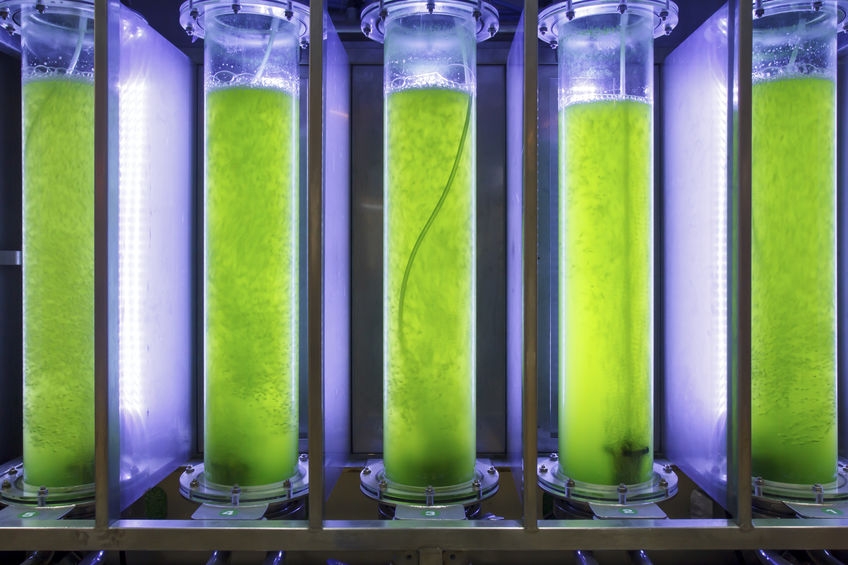
Direct electrolysis has mixed results for microalgae biodiesel: researchers
December 18, 2018
By Pertanika Journal
Dec. 18, 2018 - Researchers in Malaysia are investigating ways to improve biodiesel production by using electrical fields to break open microalgae cells, with varied results, according to a new study in the Pertanika Journal of Science & Technology.
 Researchers are investigating ways to improve lipid extraction from microalgae to make biofuels.
Researchers are investigating ways to improve lipid extraction from microalgae to make biofuels. Lipids inside microalgae are a promising source of biofuel. Microalgae cells must first be broken apart in order to extract the lipids. Conventional technologies are energy intensive and time consuming, so a group of researchers from Universiti Malaysia Sabah investigated a novel method using direct electrolysis.
During electrolysis, cells are disrupted when electric field forces overcome the interactions which hold membranes together, resulting in the formation of pores in the cell membrane. In this study, the researchers passed the microalga Chlorella sp. through electric fields of different strengths generated by two stainless steel electrodes. Electrolyzed cells were subsequently freeze-dried and treated with solvents to extract lipids.
The amount of lipids extracted from cells that passed through low electric fields was the same as cells that did not go through electrolysis. In contrast, at high electric fields, 11 per cent to 13 per cent fewer lipids were extracted from electrolyzed cells than the untreated cells. The researchers hypothesized that the lipids may have been lost through oxidation during electrolysis.
The researchers also investigated if solvents are required for lipid extraction of electrolyzed cells. Their analysis found that lipids were present only in the solvent extract, indicating that lipids cannot be extracted by electrolysis alone.
Methyl palmitate – a fatty acid preferred for use in biodiesel engines, and methyl linolenate were the major components in the extracted lipid, with no significant difference in methyl palmitate concentration of electrolyzed and untreated samples. The researchers also observed that no intact cells remained after electrolysis. The findings indicate that while the direct electrolysis treatment was effective at disrupting microalgal cells, it did not significantly enhance lipid extraction efficiency.
For the method to achieve the higher lipid yields reported in literature and be feasible for microalgal lipid extraction in biodiesel production, parameters such as field strength and solvent type should be optimized. Further investigation into the effect of oxidation on lipid loss is also required.
Pertanika Journal of Science & Technology (JST) is published by Universiti Putra Malaysia in English and is open to authors around the world regardless of nationality. Currently, it is published four times a year in January, April, July and October. Other Pertanika series include Pertanika Journal of Tropical Agricultural Science (JTAS), and Pertanika Journal of Social Sciences & Humanities (JSSH).
Pertanika Journal of Science & Technology aims to provide a forum for high quality research related to science and engineering research. Areas relevant to the scope of the journal include: bioinformatics, bioscience, biotechnology and bio-molecular sciences, chemistry, computer science, ecology, engineering, engineering design, environmental control and management, mathematics and statistics, medicine and health sciences, nanotechnology, physics, safety and emergency management, and related fields of study.
This article is part of Biofuels Week 2023. To read more articles on biofuels, click here.
Print this page